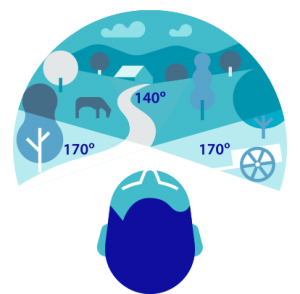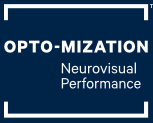Binocular vision in humans
As with primates, the human visual field is overlapped because our system is designed to have both eyes working together. This is crucial for our attention to detail, depth perception and spatial awareness so we can navigate our environment smoothly and accurate.
Binocular vision in animals
There are many different styles of binocular systems across animals, with each one designed to meet specific needs. The position of the eyes on the head and their relationship to each other gives clues on how the visual system is used.
The lighter shades represent areas seen by one eye only, the darker area is seen by both eyes simultaneously.
The position of the eyes on a cow’s head and area they cover demonstrates that its visual system prioritizes wide views without as much depth information – a common trait in species where that need to scan for predators while grazing or sedentary. In this demonstration photo, of the 150 degrees each eye can see, only 60 is overlapping. Many cows actually have a larger peripheral than this!

Meanwhile, primates have eyes in the front of their head to maximize how much overlap there is between each individual eye. Of the 170 degrees each eye can see, 140 of that is overlapping.

Opto-mization™ Training
Opto-mization™ Training is a step-by-step, development-based series of activities that help you learn and develop your visual abilities. Practiced over a time-frame of six-months to one-year, Opto-mization™ Training results in a more efficient and comprehensive visual process – alleviating many Learning and Performance-based.
